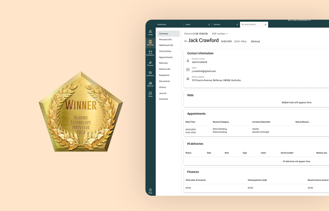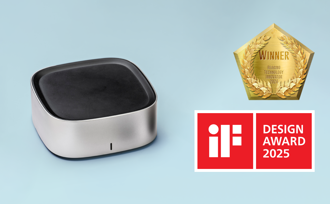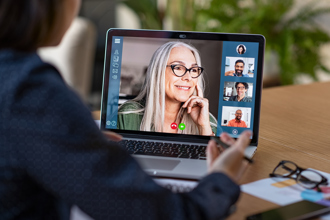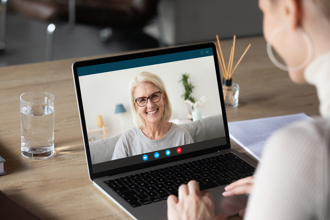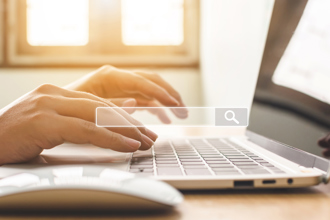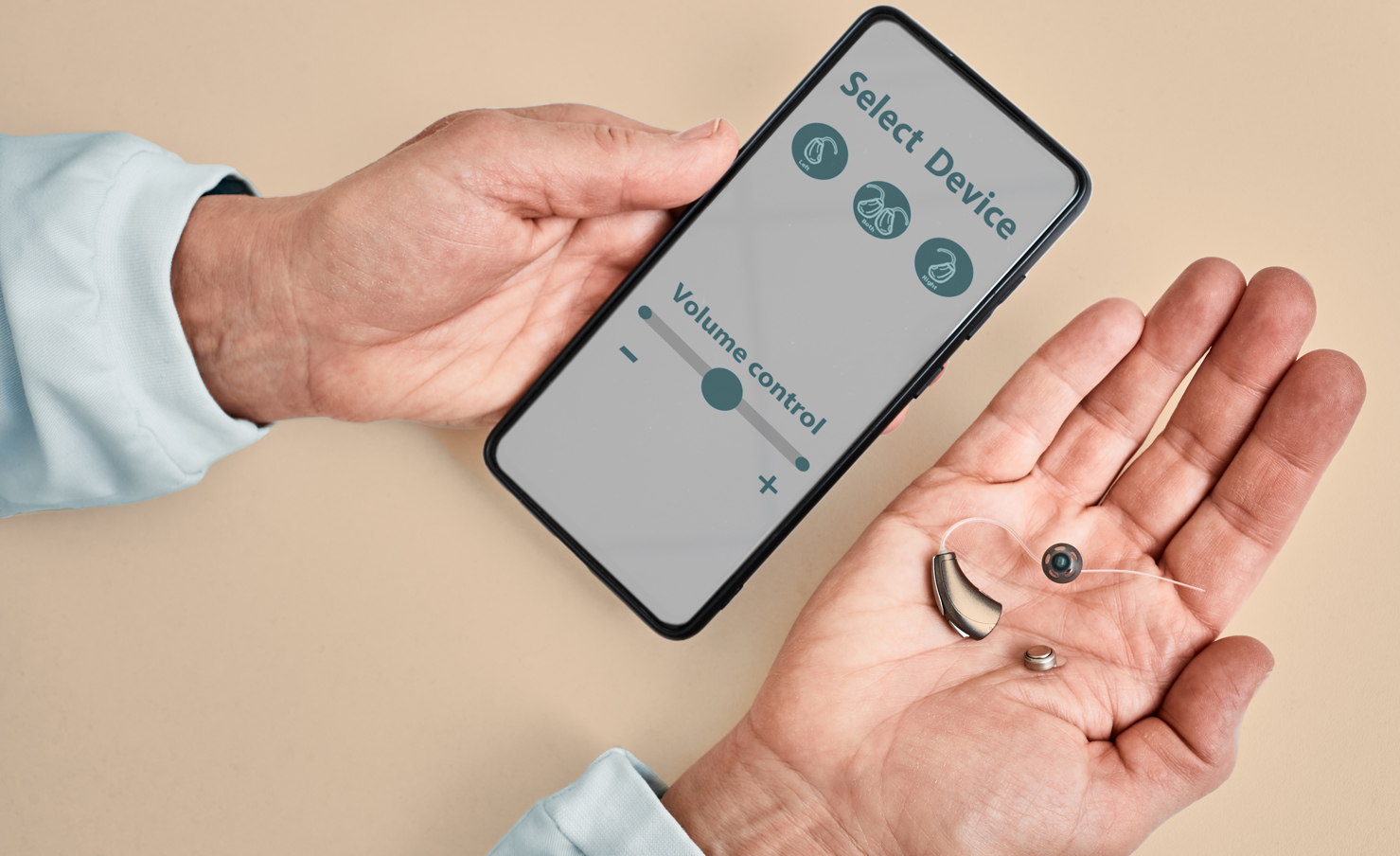
Tech advancements – from software solutions for audiologists to Bluetooth-enabled hearing aids – are helping our industry grow, evolve, and improve customer care. Adopting these innovative technologies can help audiologists enhance education, research methods, clinical practice, and positive outcomes.
Groundbreaking developments allow people with hearing loss to use technologically advanced hearing aids with Bluetooth technology, Artificial Intelligence, rechargeable batteries, automatic translation services, and waterproof designs. The newest features and functions let them hear more clearly and experience a variety of terrific benefits.
Consumers are faced with an overwhelming number of options, including traditional hearing aids and over-the-counter (OTC) devices, which have recently become more prevalent. The growing category of OTC hearing aids relies on online- and app-based hearing assessments and advanced earbud technology to provide consumers with direct access to hearing devices.
Hearing loss continues to be a major health issue, with WHO predicting that by 2050, 2.5 billion people globally will experience hearing loss. Unfortunately, people are often reluctant to visit a hearing clinic for a screening, either because they’re in denial about their hearing loss, they worry about the negative stigma around wearing hearing aids, or they don’t want to spend money on a hearing device. In fact, people with hearing loss typically take an average of seven years before receiving a proper hearing assessment.
Luckily, tech improvements in audiology will not only allow audiologists to provide better hearing tests, but they will also help to provide even more individualized solutions to their clients. This will enable people to hear better and enjoy the things they love, like listening to music, dining out with friends, and watching their favorite TV shows. With each advancement, like AI capabilities, improvements in rechargeability, telehealth options, and increased access to new OTC devices, a growing number of individuals with hearing loss can be reached.
AI-Friendly Audiology Technology Is Shaping Trends in Hearing Health
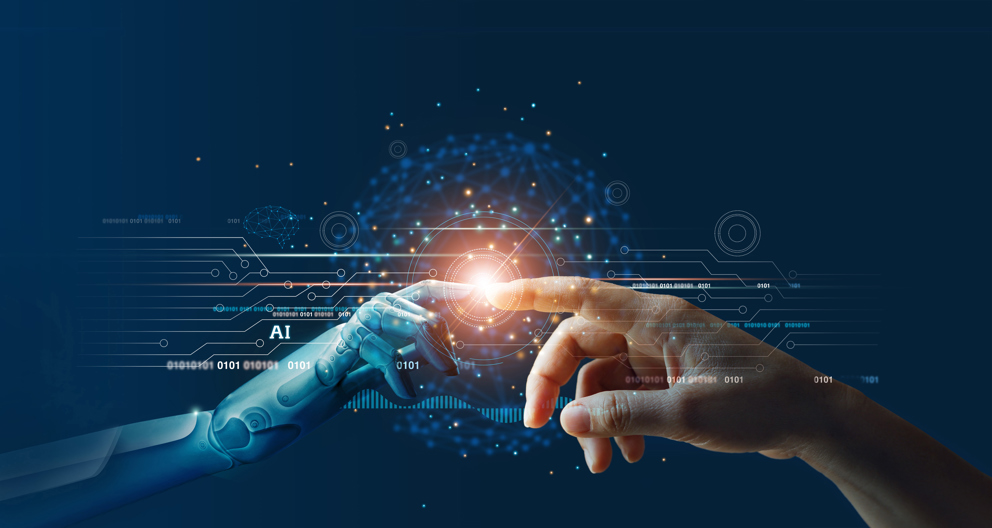
One of the most significant tech trends is the use of artificial intelligence (AI) in audiology. AI is helping audiologists get better access to data and insights, for more informed decision-making.
Additionally, AI in hearing aids can be an effective way to improve the devices’ performance.
AI can help improve people’s overall experiences with their hearing aids, leading to increased satisfaction rates and happiness with the devices. For instance, AI can help hearing aids learn more about a person’s needs and preferences. Say someone is dining out at a restaurant with a group of friends. AI technology can allow the hearing aids to enhance the sounds of the people talking at the table and filter out the background noise of dishes clanging and conversations from nearby tables.
Say someone is dining out with a group of friends. While the hearing aid provides noise management capabilities to enhance the sounds of the people talking at the table and filter out background noise like dishes clanking, a user may want to adjust those settings via an app or push button. AI technology can allow the hearing aid to "remember" these preferences and automatically make these changes in the future when the individual is at a restaurant again.
Unlock the Power of AI in Hearing Care
AI is reshaping the way we work, yet its potential in hearing care remains underused. After completing The Business of AI course at London Business School with peers from Amplifon, Specsavers, and The Hearing Care Partnership, we’ve gathered key takeaways to inspire new ways of using AI to solve challenges, improve operations, and elevate patient care.
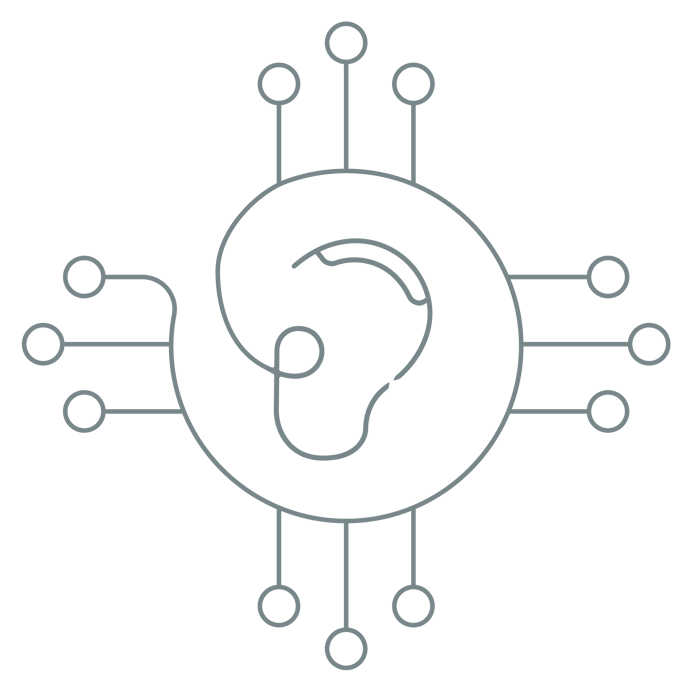
Machine Learning Continues to Evolve

Machine learning is evolving in exciting ways and is positively impacting the audiology industry. Machine learning, a subfield of artificial intelligence, is the capability of a machine to imitate intelligent human behavior. In other words, these systems are used to perform complex tasks in a way that mimics how humans solve problems.
Machine learning algorithms can create customized settings based on each user’s specific needs and degree of hearing loss, resulting in more personalized hearing aid solutions. For instance, AI and machine learning can accurately analyse a user's listening habits and preferences and use that information to optimize their hearing aid settings.
High-performance chips will become more common moving forward. This will make it quick and easy to accurately create customized amplification and connectivity settings resulting in a better and more precise experience for each user.
Advanced Health Tracking Features Optimize Hearing Health
Certain hearing aid models have advanced health and fitness tracking features, including heart rate sensors. These hearing aids can also collect data on the user's physical activity, sleep, and other health metrics. This information can be used to optimize the hearing aid’s performance.
These devices can also alert the user (and/or their healthcare provider) if there are any changes in their hearing health. This allows consumers to be more proactive about coming into your clinic for an exam, hearing aid adjustments, or other services to ensure that they’re hearing well.
Hearing Aid Apps are Becoming More Sophisticated
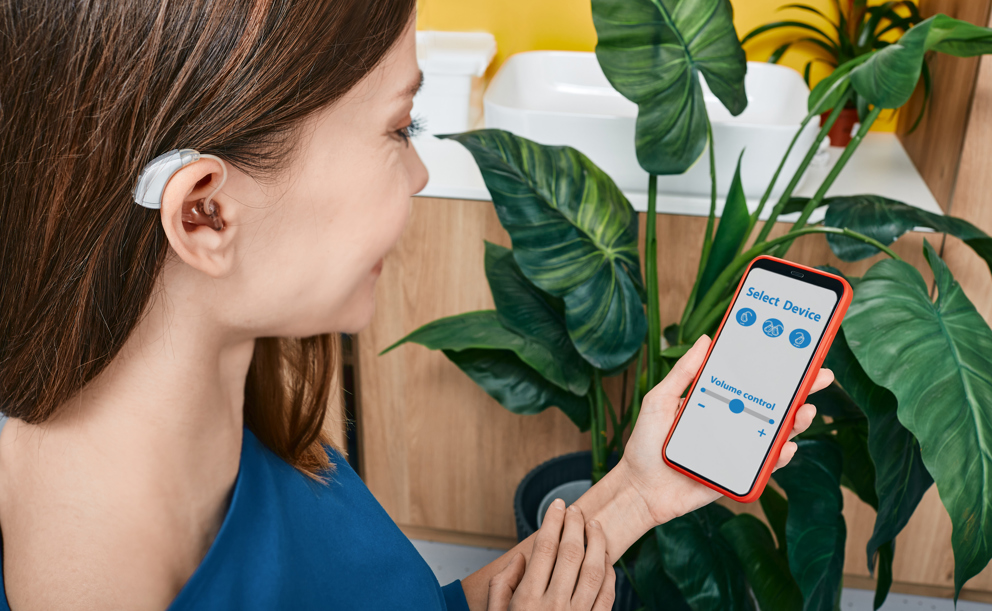
While hearing aid apps are not new, they are evolving and becoming more sophisticated. Consumers can use their apps to control and customize their hearing aid settings, as well as monitor and track their hearing health.
Users can rely on apps to adjust their hearing aids in real time. They can customize the volume and frequency settings, and switch between different listening profiles depending on the environment they’re in (such as a noisy restaurant vs. their quiet living room).
Hearing aid apps also offer helpful features like speech recognition and language translation, making it easier than ever for people with hearing loss to communicate with others.
In the future, expect to see even more advanced hearing aid apps that offer a wider range of features, functions, and capabilities.
More Accurate Hearing Tests Lead to Happier Customers
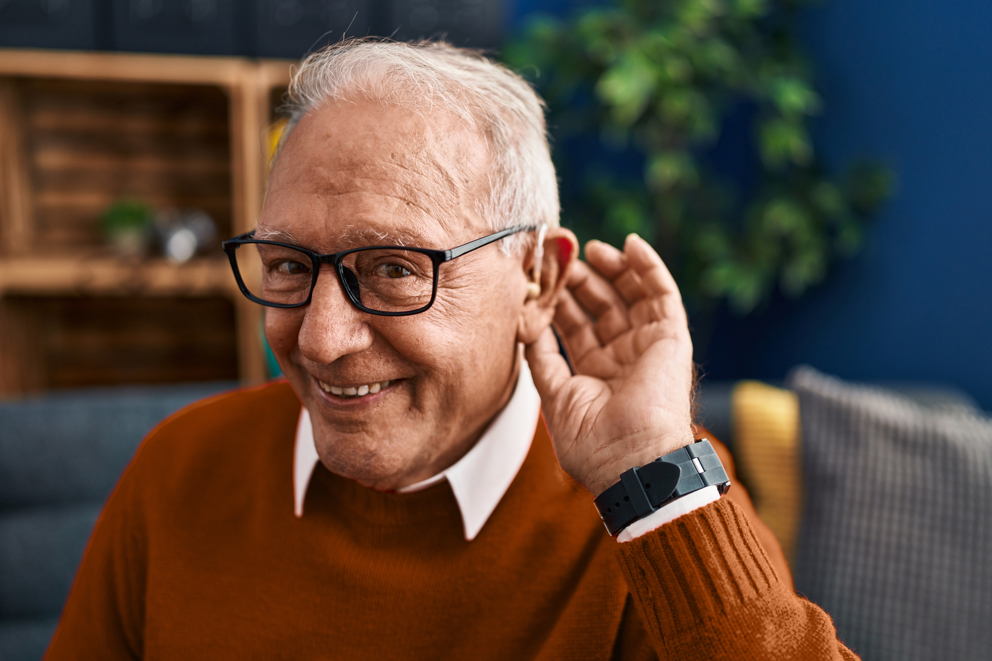
Approximately 20% of all hearing aids are returned. This is often after a consumer's improper first hearing aid fitting whether due to amplification levels, and/or continued difficulty with background noise, among other reasons.
Audiologists, therefore, need to conduct more accurate, comprehensive hearing tests and fittings to ensure the perfect amplification levels and comfortable fit, which will help reduce hearing aid return rates.
Luckily, advanced algorithms and computerized testing systems are making it possible for audiologists to conduct more precise, accurate tests. These state-of-the-art technologies allow audiologists to identify hearing loss more precisely, fit customers properly, and track any changes in their customers’ hearing over time.
As a result, audiologists can fine-tune hearing aids to the precise specifications that each customer needs. This means happier, more satisfied, loyal customers – and fewer hearing aid returns.
Making Hearing Aids More Versatile and User-Friendly
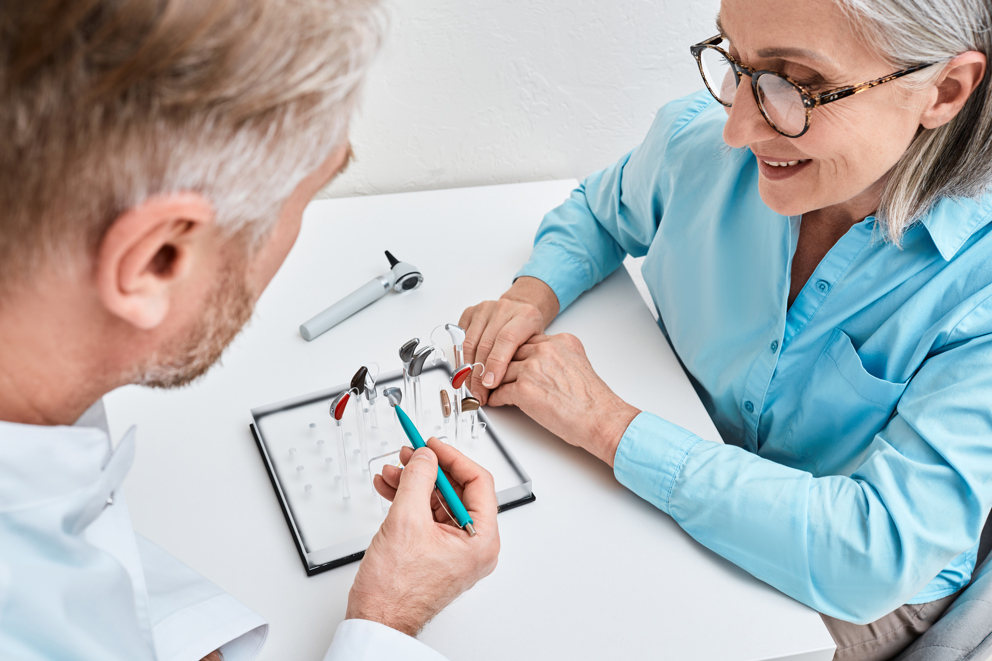
Advances in technology are making hearing aids more modern and user-friendly. Now, thanks to cutting-edge technologies, hearing aids can be personalized to fit the specific needs and preferences of each user. Hearing aids can also be connected to other devices, such as smartphones and laptops, to provide additional functionality and enhance the customer’s daily activities, like talking on the phone and participating in FaceTime, Team, or Zoom calls.
Enabling Remote Consultations to Overcome Various Challenges

Sometimes, customers can’t come visit your clinic in person, due to mobility issues, illness, lack of transportation, long distances to your clinic, and other challenges. Now, new technologies enable audiologists to provide services remotely, using tools like video conferencing, so it’s easy and convenient for customers to receive the care they need. This can be especially valuable when treating customers who live in remote or underserved areas.
Enhance Research and Development to Drive New Solutions

Technology is instrumental in advancing research and development in audiology. For instance, machine learning algorithms can be used to analyze large datasets of hearing test results, allowing researchers to identify trends and patterns in hearing loss and hearing health. This information can drive the development of new treatments and solutions, including more advanced hearing aids, customizable features, interactive apps, and more.
Reducing Noise Inside and Out
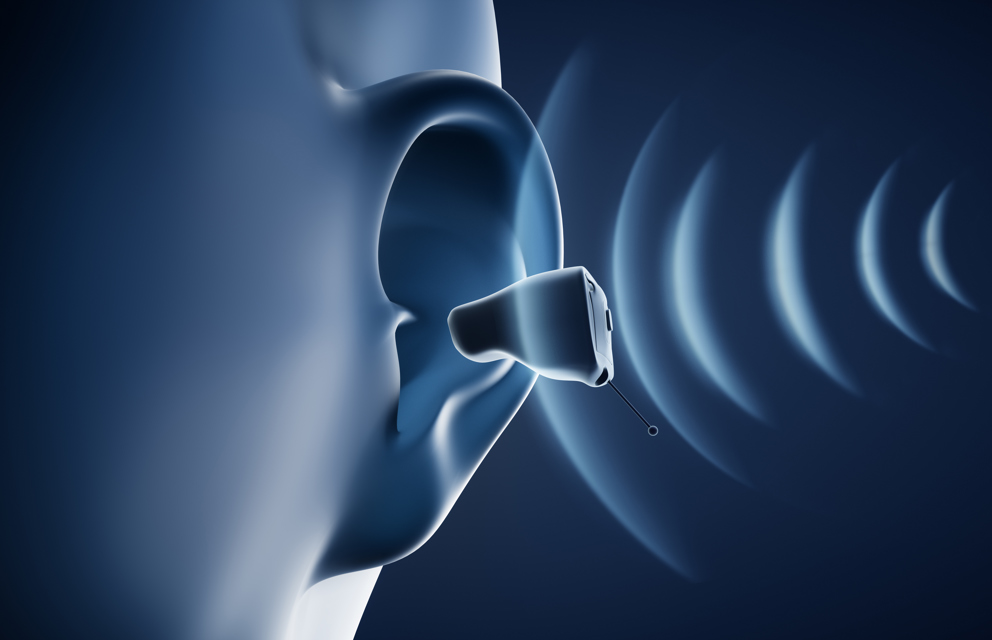
Innovative new noise reduction features can assess and reduce incoming sounds, such as background noise and nearby conversations, to help users hear better.
For instance, wind noise reduction allows people with hearing aids to enjoy outdoor hobbies – including gardening, fishing, hiking, and running – without the wind impacting their ability to hear properly. The technology on modern hearing aids can detect wind blowing and automatically reduce the volume of that sound.
Microphone systems and digital noise reduction can diminish background noise while simultaneously increasing the volume of speech. As a result, the hearing aid user can focus on conversations, even in very busy settings with abundant background noise.
Tech Developments Help People Hear Better in Any Situation

Technology is changing audiology for the better, with a variety of exciting developments that will help people hear better in any situation. Personalization through AI, better reduction of background sound, more sophisticated apps, and more precise hearing screenings will all result in better treatments, devices, and solutions for people with hearing loss.
Contact us for to learn about Auditdata’s best-in-class audiology solutions that can help drive better business outcomes and improve your customers’ hearing ear by ear.
Other Blogs You Might Enjoy:

7 Reasons Why Your Audiology Hearing Center Should Go Paperless
If your audiology clinic is still relying on paper documents, your business is not as efficient, secure, or organized as it could be. This post will explore 7 reasons that audiology clinics need to go paperless.
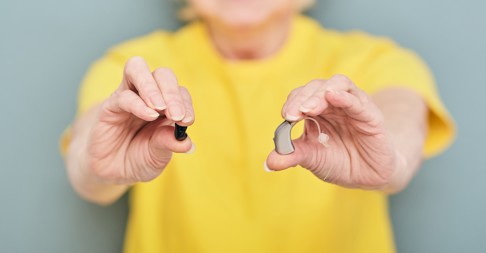
Over The Counter Hearing Aids – What Should You Do As a Practice Owner?
A more open market for hearing aids is expected to put pressure on the traditional hearing care clinics. Let’s explore if this is a threat or opportunity.
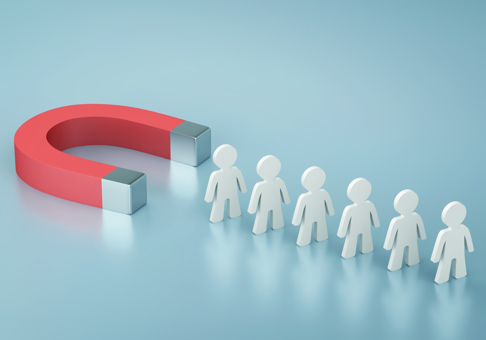
6 Marketing Challenges That Can Derail the Success of Your Hearing Clinic
Marketing is an essential business function to help attract attention, generate interest, drive sales, and help differentiate your business. Don’t let marketing challenges derail your success.
Don't Miss Out On the Latest Insights On Audiology
Sign up today to receive exciting updates, tips, and the latest newsletters from Auditdata.
